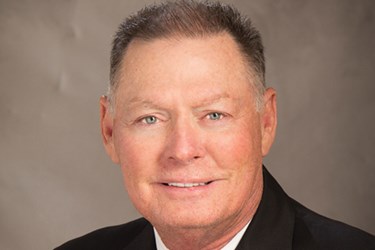Catalyst CEO Shares Product Pricing Context

By Wayne Koberstein, Executive Editor, Life Science Leader
Follow Me On Twitter @WayneKoberstein

From The January 2016 Issue
Companies To Watch: Catalyst Pharmaceuticals
The following is an excerpt from the interview with Catalyst Pharmaceuticals’ Co-Founder, President and CEO Pat McEnany for our January 2016 installment of Companies to Watch. Catalyst epitomizes the pricing issues so many companies now face with new, possible breakthrough or essential drugs they in-license or acquire the rights to develop, yet its situation is also unique in many ways.
Catalyst is developing drugs in the neuromuscular disease area, with Firdapse (amifampridine phosphate) as its lead candidate, for treating the rare condition Lambert-Eaton Myasthenic Syndrome (LEMS). The company licensed North American rights to Firdapse from BioMarin, which already markets the product in Europe.
McEnany: There’s this looming question — where are you going to price your drug? We will be treating a rare disease with about 3,000 patients and we in-licensed this drug from BioMarin. Together, BioMarin and Catalyst have about $50 million invested in this project. Now that’s not a lot from Big Pharma’s point of view, but we started off in the addiction space and in-licensed technology from Brookhaven National Lab on Long Island, one of the U.S. Dept. of Energy-funded think tanks, to treat an unmet medical need, stimulant dependence, specifically cocaine and methamphetamine addiction. After Catalyst and our partner, the National Institute on Drug Abuse, spent about $30 million on our pivotal Phase 2 trial, it was a bust. The risk in this business is high, and a little company like us doesn’t have too many shots after blowing $30 million on a failed trial.
Then BioMarin introduced us to the Firdapse program. BioMarin had worldwide rights and had launched the drug in Europe two years before. Meanwhile, its market cap, pipeline, and revenues had grown, and it wanted to bring the product to the United States. BioMarin is not a neuromuscular company, it’s not about small molecules, it’s about biologics, so it wanted to partner the U.S. development of Firdapse to a company that could take it and run. BioMarin had tried to submit a paper NDA as it did in Europe, basically submitting published literature, but the FDA said, “No, we want a full, rigorous program. We’ll give you a break on the pivotal trials because it’s a small population. We’ll let you do a Phase 3 study with an endpoint of 30 patients, but we want a full preclinical package and the rest of the clinical studies.”
At Catalyst, we spent about 10 months trying to determine if we should do this, completing our due diligence, and then, how we could finance it. We did this prior to seeing the data from our cocaine-addiction trial. But on October 31, 2012, we acquired the North American rights to Firdapse, and six weeks later we announced our failed pivotal study for cocaine addiction. Fortunately, one had come before the other. Had it been the reverse, we may not be sitting here today, which, in this biotech industry, is not unusual, right? One day you’re a startup cancer company and the next thing you know you’re doing pulmonary products or whatever. So we made the transition from an addiction company to a neuromuscular-disease company.
Now, at the end of all the work and nearing the final lap of the Firdapse project, people are asking, how are you going to price this? It seems like the question of the day. And we don’t know yet how we will price it. We’re probably nine months from launch. We will complete a rolling submission of our NDA during the fourth quarter of this year [2015], and the FDA has 60 days to accept or reject the filing. That puts us into February and we expect a priority review because we have Breakthrough Therapy designation, as well as orphan-drug designation. So we expect a PDUFA date of August 2016.
There is no FDA-approved drug for LEMS. There are steroids, plasmapheresis, IVIG (intravenous immunoglobulin), but some of those are very expensive and not very effective. There is also a relatively small amount of compounding of this drug, the free-base formulation 3, 4 diaminopyridine or 3, 4 DAP. We started an expanded access program where docs who have qualified patients can access the drug from us, and we’ve made the drug available since the beginning of the year [2015].
If you like what you are reading and would like access to more executive level insights throughout the year, be sure to become a Life Science Leader magazine subscriber by clicking here.
